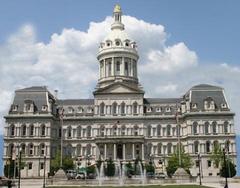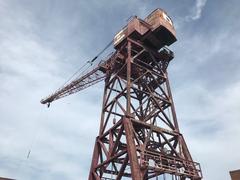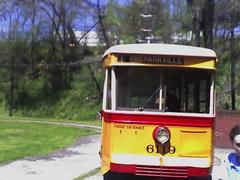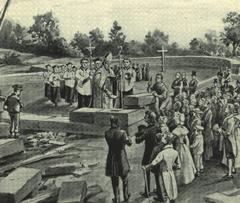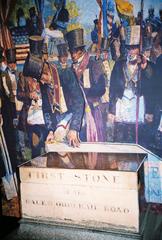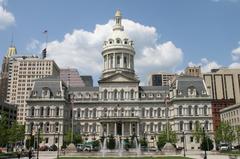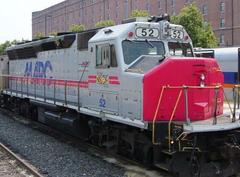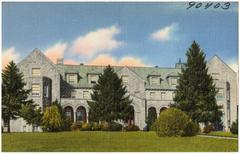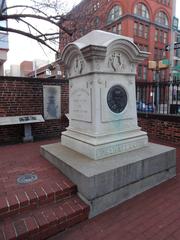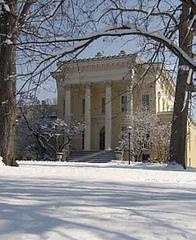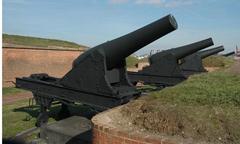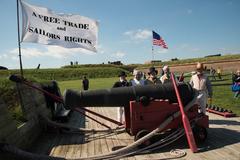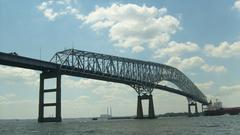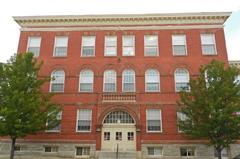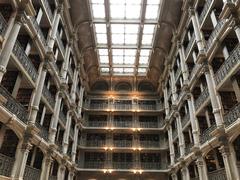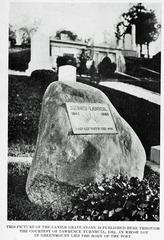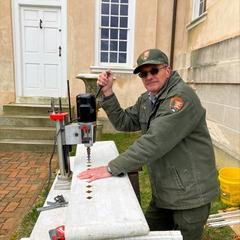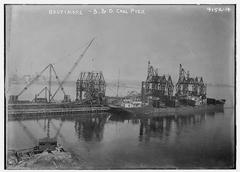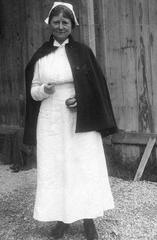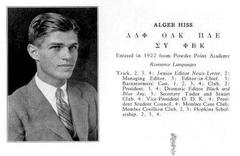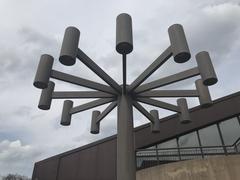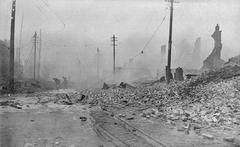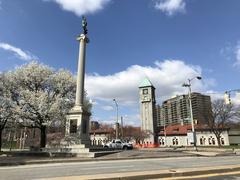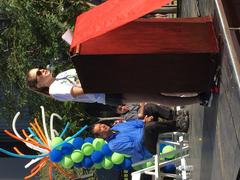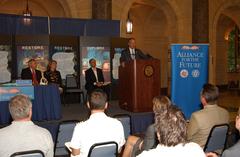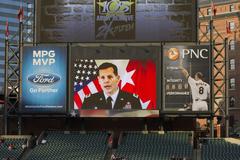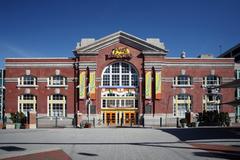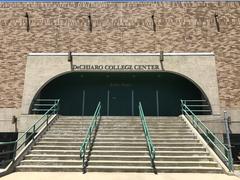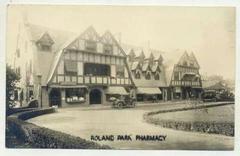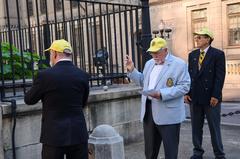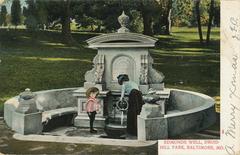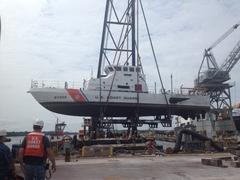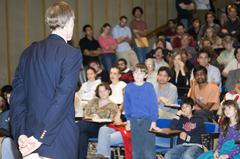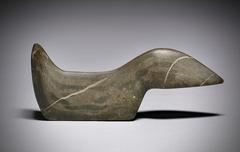West Baltimore Visiting Guide: Historical Sites, Tickets, and Hours
Date: 04/07/2025
Introduction to West Baltimore Historical Sites and Visitor Information
West Baltimore is a neighborhood renowned for its profound impact on the cultural, political, and social fabric of Baltimore and the United States. Home to pivotal African American institutions, storied landmarks, and a resilient community spirit, West Baltimore invites visitors on an immersive journey through its historic corridors and vibrant contemporary culture. Landmarks such as the Union Baptist Church, Bethel AME Church, and the childhood home of Thurgood Marshall highlight the area’s contributions to civil rights and African American empowerment, particularly along the famed Pennsylvania Avenue—a corridor once likened to Harlem for its cultural dynamism (Maryland State Archives; Baltimore Magazine).
West Baltimore continues to thrive as a center for arts, music, and community engagement. Annual celebrations such as the AFRAM Festival and ongoing efforts by local organizations foster a creative and revitalized atmosphere (AFRAM Festival 2025). The neighborhood’s accessibility via public transit, proximity to green spaces like Druid Hill Park, and educational institutions such as the Lillie Carroll Jackson Civil Rights Museum make it a compelling destination for visitors from all walks of life (The Baltimore Banner; Baltimore.org).
This guide details the area’s historic evolution, practical visitor information, and must-see attractions, ensuring a respectful, enriching, and memorable experience for all.
Table of Contents
- Urban Development and Demographic Shifts
- Civil Rights and Political Empowerment
- Cultural Flourishing: The Pennsylvania Avenue Era
- Social Challenges and Resilience
- Architectural and Historic Landmarks
- Visitor Information
- Community Life and Contemporary Culture
- Visitor Tips for a Respectful and Memorable Experience
- Frequently Asked Questions (FAQ)
- Exploring West Baltimore Historic Sites
- Cultural Festivals and Community Events
- Museums and Educational Attractions
- Parks, Recreation, and Outdoor Life
- Community Organizations and Initiatives
- Visitor Tips and Practical Information
- Visiting the Washington Monument in Baltimore
- Visiting the Frederick Douglass - Isaac Myers Maritime Park
- Summary and Visitor Recommendations
- References and Further Reading
Urban Development and Demographic Shifts
West Baltimore’s growth is closely tied to Baltimore’s post-Civil War expansion. Improved transportation—first with horsecars, then electric trolleys—spurred the development of rowhouse neighborhoods, enabling residents to commute from West Baltimore to the city center (Maryland State Archives). Originally a mosaic of European immigrants and a burgeoning Black middle class, the area’s demographics shifted over time, especially during the Great Migration, when African Americans became the majority population. By the early 20th century, West Baltimore had become the heart of Black Baltimore.
Civil Rights and Political Empowerment
The neighborhood has long stood at the forefront of civil rights activism. Churches like Union Baptist and Bethel AME became not only spiritual havens but also centers of political organization and social justice. Notably, Harry S. Cummings was elected as Baltimore’s first African American City Council member in 1890, paving the way for greater Black political representation (Maryland State Archives). The community also produced legal pioneers who challenged discriminatory policies, helping overturn residential segregation ordinances in the early 20th century.
Cultural Flourishing: The Pennsylvania Avenue Era
From the 1920s to the 1960s, Pennsylvania Avenue thrived as a hub of Black entertainment, commerce, and culture. Jazz legends like Louis Armstrong performed in local clubs, and the avenue’s theaters and shops fostered a lively economic ecosystem (Baltimore Magazine). This era’s legacy endures through historic architecture, murals, and ongoing community celebrations.
Social Challenges and Resilience
West Baltimore has faced adversity, particularly following the 1968 riots, which led to business closures and significant economic decline (Baltimore Magazine). Discriminatory housing policies and redlining further entrenched poverty and health disparities. Despite these hardships, local organizations, faith communities, and dedicated residents have fostered resilience, advocating for revitalization and celebrating local heritage through public art and grassroots initiatives.
Architectural and Historic Landmarks
West Baltimore is home to numerous sites recognized as Baltimore City Landmarks (CHAP Landmark List). Key locations include:
- Union Baptist Church: A cornerstone of civil rights activism. Open weekdays 9 AM–5 PM; free admission.
- Bethel AME Church: Historic African Methodist Episcopal congregation, open Sundays for services and by appointment for tours.
- Historic Pennsylvania Avenue: Once a thriving Black business and entertainment district; open for public exploration daily.
- Thurgood Marshall’s Childhood Home: Guided tours Saturdays, 10 AM–4 PM; adults $5, students/seniors $3.
Most sites are wheelchair accessible, but it’s advised to contact locations ahead for specific accommodations.
Visitor Information
Visiting Hours & Tickets
Many landmarks operate during business hours, with some requiring advance registration for tours. Always verify current schedules on individual websites.
Transportation & Parking
West Baltimore is well-served by buses and Light RailLink. On-street and lot parking are available near most attractions. Travelers should use well-lit areas and secure parking.
Nearby Attractions
- Druid Hill Park: Urban park with trails, a conservatory, and the Maryland Zoo.
- Eubie Blake National Jazz Institute and Cultural Center: Celebrates Baltimore’s jazz legacy.
- Baltimore Museum of Art: Major art museum within a short drive.
Community Life and Contemporary Culture
Despite economic challenges, West Baltimore boasts a vibrant community life. Churches remain social anchors, and local businesses, bakeries, and restaurants foster neighborhood identity (Baltimore Magazine). Public art, festivals, and youth programs highlight the area’s enduring creativity and resilience.
Visitor Tips for a Respectful and Memorable Experience
- Engage with Local History: Attend guided tours and heritage walks to gain deeper insight (Maryland State Archives).
- Support Local Businesses: Shop and dine locally to contribute to economic revitalization.
- Be Respectful: West Baltimore is a living community; seek permission before photographing people or private property.
- Safety: Stay on main streets, travel in groups, and consult local guides for current advice.
- Participate in Events: Join community festivals and art walks for authentic engagement (Baltimore Events).
Frequently Asked Questions (FAQ)
Q: What are the visiting hours for key landmarks?
A: Most are open weekdays 9 AM–5 PM; some offer weekend tours by appointment.
Q: Are there entrance fees?
A: Many churches and outdoor sites are free; some museums and historic homes charge a nominal fee.
Q: Is the area accessible to visitors with disabilities?
A: Most major sites offer ramps and accessible restrooms; confirm with venues for details.
Q: How do I get there by public transportation?
A: West Baltimore is accessible via MTA buses and Light RailLink. Check the Baltimore.org transportation guide for routes.
Q: What safety measures should visitors take?
A: Remain in populated areas, travel in groups, and follow local safety recommendations.
Exploring West Baltimore Historic Sites
Old West Baltimore Historic District
Encompassing neighborhoods like Madison Park, Upton, and Sandtown-Winchester, this district is pivotal to African American history. Guided tours are available via Baltimore Heritage (The Baltimore Banner).
Justice Thurgood Marshall Amenity Center
Opening in December 2025, this center honors Thurgood Marshall’s legacy and will offer historically restored spaces and educational programs. Accessibility features will be available.
Upton’s Marble Hill and Civil Rights Landmarks
Historic sites include Union Baptist Church and the former law office of Juanita Jackson Mitchell. Occasional open houses and tours highlight their significance (CBS News Baltimore).
Lillie Carroll Jackson Civil Rights Museum
Guided tours Tuesday–Saturday, 10 AM–4 PM; adults $5, children under 12 free. The museum is wheelchair accessible (The Baltimore Banner).
Poppleton Neighborhood and Preservation Initiatives
UMBC and local groups document Poppleton’s history. Walking tours and events are announced through local listings (Baltimore Traces).
Cultural Festivals and Community Events
AFRAM Festival
Baltimore’s largest African American cultural festival, held in early September at Druid Hill Park. Tickets $10–$30; family passes available (AFRAM Festival 2025).
Local Community Gatherings
Events like the Eager Park Concert Series and seasonal fairs offer music, food, and workshops (Bmore Connect).
Artisanal Markets and Creative Economy
Markets feature local crafts and support community growth. Schedules appear in community newsletters and festival announcements.
Museums and Educational Attractions
- B&O Railroad Museum: Open daily, 10 AM–5 PM; adults $16. Fully accessible (Holidify).
- Edgar Allan Poe House & Museum: Thurs–Sun, 12–4 PM; $5 admission. Limited accessibility.
- Reginald F. Lewis Museum: Wed–Sun, 10 AM–5 PM; $12 adults, $8 seniors/students. Focuses on Maryland’s African American history.
Parks, Recreation, and Outdoor Life
- Druid Hill Park: 6 AM–10 PM daily. Features trails, playgrounds, and the Maryland Zoo.
- Carroll Park Golf Course: Open daily from 7 AM to dusk; public course with resident discounts.
Community Organizations and Initiatives
- Heritage Preservation: Groups like Upton Planning Committee organize heritage tours and community projects (The Baltimore Banner).
- Faith Communities: Churches such as Union Baptist Church host events and remain active social hubs (CBS News Baltimore).
Visitor Tips and Practical Information
- Tours: Guided and self-guided options are available; marker systems for self-guided tours are being developed.
- Safety: Remain aware, travel in groups, and use rideshare or transit for convenience.
- Support Local: Dining and shopping locally benefit community revitalization (AFRAM Festival 2025).
Visiting the Washington Monument in Baltimore
History and Significance
Erected between 1815 and 1829, this monument is the first in the nation dedicated to George Washington, designed by Robert Mills (Baltimore Police transparency hub).
Visiting Hours and Tickets
- Open: Tuesday–Sunday, 10 AM–5 PM. Closed Mondays/holidays.
- Tickets: Free, but reserve timed-entry tickets online for observation deck access.
How to Get There
Accessible by public transit, rideshare, and nearby parking garages.
Safety Considerations
Visit during daylight, stay aware, use reputable transportation at night, and secure belongings.
Practical Tips
Wear comfortable shoes, bring a phone charger, and travel light.
Visiting the Frederick Douglass - Isaac Myers Maritime Park
History and Cultural Significance
This park celebrates the lives of Frederick Douglass and Isaac Myers, focusing on African American maritime history.
Visiting Hours and Tickets
- Open: Tuesday–Sunday, 10 AM–5 PM.
- Admission: $10 adults, $7 seniors/students, free for children under 12.
- Tours: Daily at 11 AM and 2 PM.
Transportation
- Public Transit: MTA buses, Metro SubwayLink, and Light RailLink.
- Charm City Circulator: Free shuttle service.
- Baltimore Water Taxi: Scenic access to the waterfront (Baltimore.org).
Accessibility and Safety
Fully accessible; MobilityLink available for assistance.
Local Cuisine
- Steamed Crabs & Crab Cakes: Try at Lexington Market or local crab houses.
- Pit Beef & Soul Food: Available at neighborhood diners.
- International Eats: Caribbean, African, Mexican, and Thai options nearby.
Nearby Attractions
Reginald F. Lewis Museum and the Baltimore Maritime Festival are within reach.
Summary and Visitor Recommendations for West Baltimore
West Baltimore stands as a testament to African American heritage, civil rights activism, and ongoing community renewal. From historic sites and vibrant festivals to diverse cuisine and resilient neighborhoods, the area offers a dynamic and authentic Baltimore experience (Maryland State Archives; Baltimore Magazine; AFRAM Festival 2025).
Practical transportation options, accessible sites, and clear safety recommendations ensure a rewarding visit. Supporting local businesses and engaging with community initiatives enhance your experience and help foster ongoing revitalization (Baltimore.org; The Baltimore Banner).
Plan thoughtfully, use official resources and mobile apps like Audiala for tours and updates, and experience West Baltimore’s living history while contributing to its vibrant future.
References and Further Reading
- This is a sample text. (Maryland State Archives)
- This is a sample text. (The Baltimore Banner)
- This is a sample text. (Baltimore Magazine)
- This is a sample text. (AFRAM Festival 2025)
- This is a sample text. (Baltimore.org)
- This is a sample text. (Baltimore Traces)
- This is a sample text. (Bmore Connect)
- This is a sample text. (Holidify)
- This is a sample text. (CBS News Baltimore)
- This is a sample text. (Baltimore Police transparency hub)
- This is a sample text. (Toxigon’s 2025 Baltimore Food Guide)

